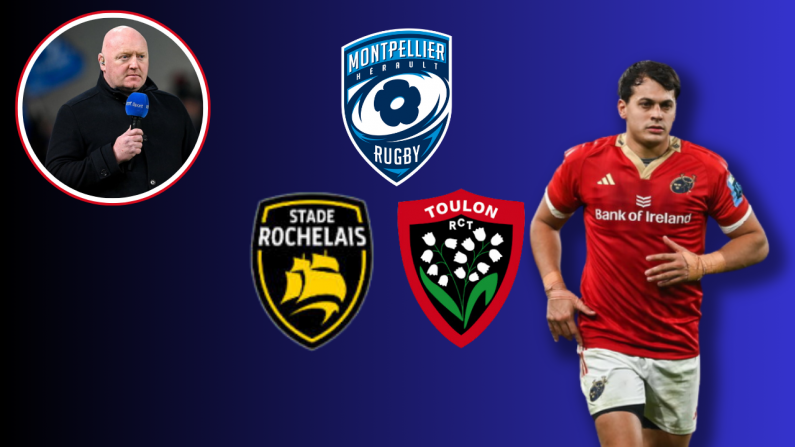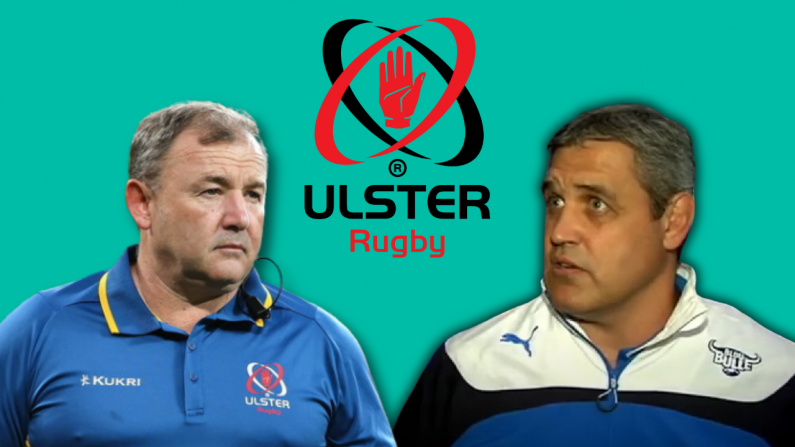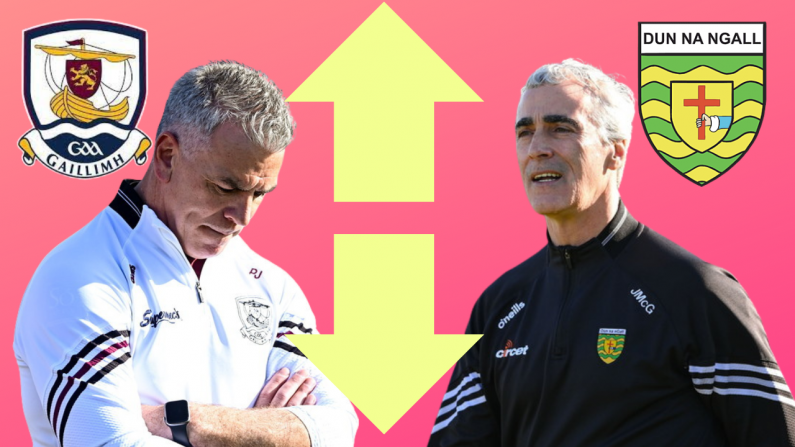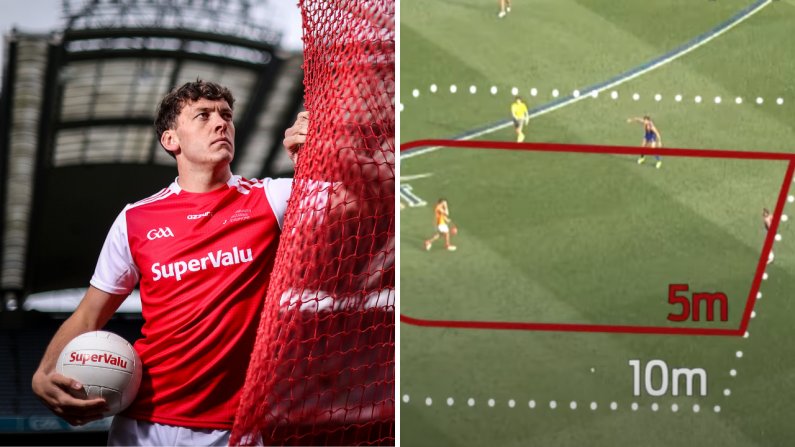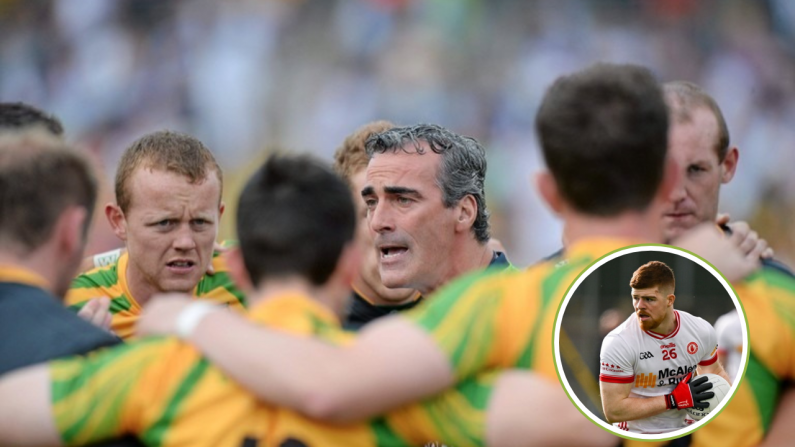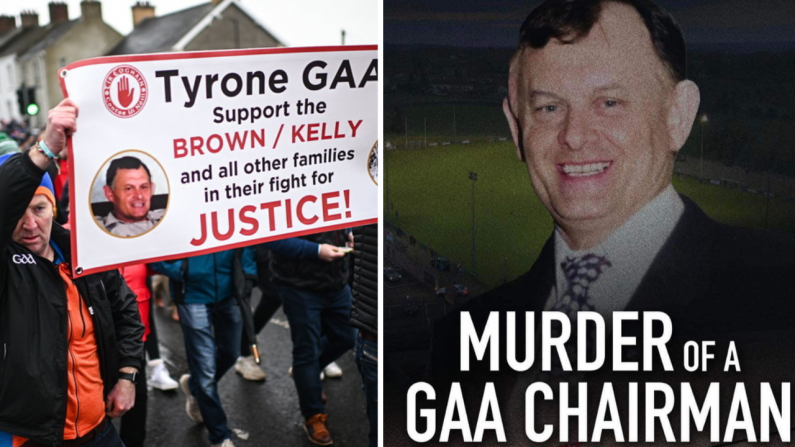British army thievery, the demands of the television age, superstition, simple forgetfulness. Inter-county sides have changed their colours for a variety of reasons.
Counties across the country have, in recent years, become more and more fond of releasing commemorative jerseys, and there have been some bangers in unexpected colour combinations - but some counties ended up on their current colour schemes through unusual routes in the past.
We've taken a look through the history books to pick out some of the most unusual and intriguing stories as to why counties changed their kit colours over the years, explaining the origin of some of the most iconic colour schemes in the GAA.
READ HERE: 7 Brilliant GAA Gift Ideas For The Gaelic Games Fan In Your Life
READ HERE: The Seven Players To Win Hurling All-Stars As Backs And Forwards
GAA: 8 counties who made a change to their kit colours
Galway
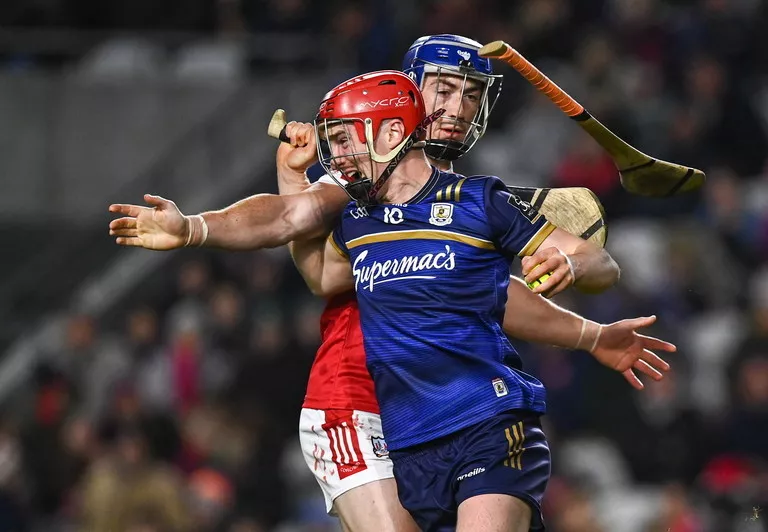
9 December 2023; Tom Monaghan of Galway is tackled by Sean O'Donoghue of Cork during the Teddy McCarthy Hurling Tribute Game between Cork and Galway at Páirc Uí Chaoimh in Cork. Photo by Eóin Noonan/Sportsfile
Last weekend, Galway travelled to Pairc Uí Chaoimh to face Cork in a challenge match, in honour of the Rebels' late legend Teddy McCarthy, who died earlier this year.
To commemorate the 100th anniversary their first ever All-Ireland hurling final win (the 1923 final, played in 1924), Galway commissioned a special jersey from O'Neills evoking the design of that season.
The navy and gold is certainly a departure from the maroon we've become accustomed to, and was worn in 1924 in honour of county hurling champions Tynagh's colour scheme.
The design incorporates the names of all of the players, managers, and board officials involved in that maiden All-Ireland win, and we have to say it's a cracker.
Cork

12 March 2016; Blue Cs. The blood and bandages looms over a one-off blue strip which Cork don to mark the anniversary of the 1916 Easter Rising. Kilkenny spoil the Rebels’ celebrations on Leeside. Picture credit: David Maher / SPORTSFILE
Cork's original blue and yellow jerseys were a victim of the War of Independence. It transpires that Cork only wear red thanks to the nabbing fingers of the British army.
In 1919, the offices of the Cork county board in Cook Street were raided and the original blue and yellow jerseys were nabbed.
Cork merely adopted the jerseys of the Fr O'Leary Total Abstinence Hall side, who had recently amalgamated with St. Finbarr's.
In the style of the time, Cork played Tipp in the 1919 Munster championship with these red jerseys with 'TA' branded across the front.
No county team has advertised 'total abstinence' on their jerseys since those days.
The blue-and-yellow colour scheme was revisited with a one-off special kit in 2016, to commemmorate the centenary of the Easter Rising.
READ HERE: 12 Men Who Won 2023 County Medals After Transferring GAA Clubs
Dublin

15 July 1962; Dublin captain Kevin Heffernan leads his side during the pre-match parade. Leinster GAA Football Senior Championship Final, Dublin v Offaly, Croke Park, Dublin. Picture credit: Connolly Collection / SPORTSFILE
Up until the 1940s, Dublin wore royal blue and white. From the 1940s onwards, following an accident involving a bottle of bleach, they wore sky blue and white (even though the above photo is in black-and-white, you can clearly see the brighter colour on the shorts worn by Heffo and co.)
In the early 1970s, despite not having played on television for several years, the Dubs were prompted to re-think their ensemble on the advice of the television people. Dublin county board chairman Jimmy Gray heard if off Mick Dunne the whole time.
Mick Dunne used to always say that Dublin, with the light blue and the white shorts, is not suitable for television.
Glasnevin born Paula Lee, the secretary to the secretary of the Dublin county board, felt that the Dubs would look better in blue and navy.
Gray told her to sketch her idea for a new jersey.
I started sketching out different gear with navy shorts, a stronger blue and the navy collar.
She brought it to Seamus Dalton of O'Neills. The conservatives on the county board were instinctively outraged by the idea. Jimmy Gray had the onerous task of informing them.
But it caused ructions at the county board. Breaking with tradition. Just through an oversight I never thought of telling them that the kit was going to be changed. There was war.
READ HERE: Pat Spillane Suggests Three Radical Rule Changes To Improve Gaelic Football
Kerry
In the early days of the GAA, when teams switched colours willy-nilly, usually depending on who happened to be county champions that year, Kerry had already nailed down red and green as their colours.
In 1903, the travelled east to play a tournament in Dungarvan and inexplicably left the green and red jerseys at home. Someone cocked up. This was a rather less mortifying faux pas in 1903 than it would be today.
They simply borrowed the green and gold kit off local club Kilrossanty and played so well that they decided to adopt the colours, like Goran Ivanisevic demanding the tennis ball he had just hit an ace with.
READ HERE: The Last Football All-Stars Winner From Every County In Ireland
Donegal
They didn't so much change their colours as alter their prominence in the kit. Throughout their history, Donegal wore predominantly green jerseys with a yellow sleeve.
As late as the 1992 Ulster Final, they wore predominantly green jerseys with a yellow strip for the win over Derry.
For whatever reason, they decided they wanted something different in Croke Park, wearing a largely yellow strip with green sleeves. This wasn't their away jersey.
Thereafter, it became their de-facto kit.
The primary theory here is that they changed to gold and green because there was a kit clash with Mayo in the All-Ireland semi-final, although Mayo wore their away jersey that day too.
When Donegal beat Mayo, their first All-Ireland semi-final win in five attempts, they decided it was lucky and stuck with it for the final. The rest, as they say, is history.
READ HERE: The 13 Most Iconic Hurling Helmets Ever Worn
Tipperary
A one-off county colour change, but an iconic one from recent years.
In November 1920, a challenge match between Tipperary and Dublin saw 14 people murdered, when Crown Forces arrived at Croke Park and opened fire on the crowd, on what became known as Bloody Sunday.
The darkest hour in the GAA's history, commemorations were planned in the winter of 2020, as a COVID-delayed championship curiously meant the Leinster and Munster provincial finals lined up with the centenary anniversary of that horrific day in Croke Park.
Remarkably, Tipp would win their first Munster senior title in 85 years, all while wearing jerseys commemorating the events of Bloody Sunday.

22 November 2020; Tipperary players celebrate after the Munster GAA Football Senior Championship Final match between Cork and Tipperary at Páirc Uí Chaoimh in Cork. Photo by Ray McManus/Sportsfile
Tipperary's blue and yellow colour scheme is famous now but, at the time of that fateful day in 1920, they wore the colours of the county champions. However, by a curious choice, they opted against wearing the colours of county champions Fethard on Bloody Sunday, instead wearing the white and green of Grangemockler - the club of goalkeeper Michael Hogan, who was one of the 14 killed that day.
In 2020, Tipp wore white jerseys with a green hoop, and a print of Hogan's face on the sleeve, as they defeated Cork in the Munster final to claim a memorable victory. A one-off, but a truly poignant and historic one.
READ HERE: Former Mayo Footballers Slam GAA Club's Leaked Player Charter
Sligo
Initially, Sligo wore black before switching to white with a black 'trim' in the middle of the twentieth century. This remained the case through their years of glory (well, year of glory in 1975) and their years mired in the wilderness (1976-1996).
Legendary Mickey Kearins was carried shoulder high off the field after inspiring @sligogaa to a historic @ConnachtGAA win in 1975 and 32 years later Sligo captain Noel Maguire received the Nestor Cup on his teammates shoulders as they overcame Galway. Watch Sligo’s #GAAGloryDays pic.twitter.com/U301F8eIox
— The GAA (@officialgaa) April 17, 2020
During the first year of the qualifiers, they were matched up with Kildare in Round 3. It was their first match in Croker for some time. They were forced to adopt their away jersey, a largely black strip (essentially an inversion of the colours of their home strip).
Kildare were reigning Leinster champions and aspired towards All-Irelands. However, it soon became apparent they were on the slide. Sligo won by a point and decided these new jerseys were for keeps. Since then, the black strip has become the de-facto home jersey.
Armagh
Armagh used to wear the same colours as Kilkenny. Though the GAA website tells us the story, they do not note that these are also the Crossmaglen Rangers colours. We suspect that could be what was going on there.

23 October 2022; Aaron Kernan of Crossmaglen Rangers before the Armagh County Senior Club Football Championship Final match between Crossmaglen Rangers and Granemore at Athletic Grounds in Armagh. Photo by Ramsey Cardy/Sportsfile
In 1926, before they were to play in a junior All-Ireland final against the Dubs, the Dominican nuns of Omeath in Louth knitted them some orange and white kit.
It would be shameful to ignore such a gift from these devout and holy women and they've dutifully worn them since.
This article was originally written by Conor Neville in 2016




